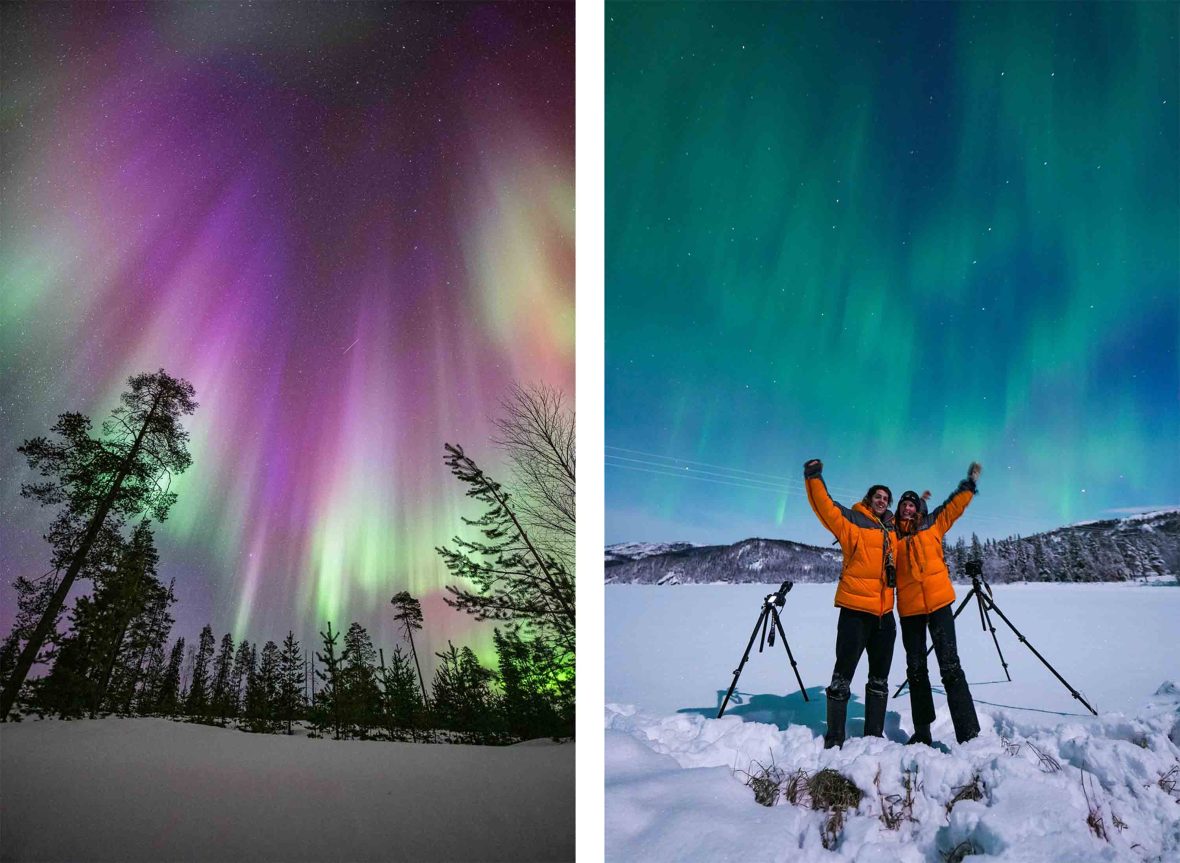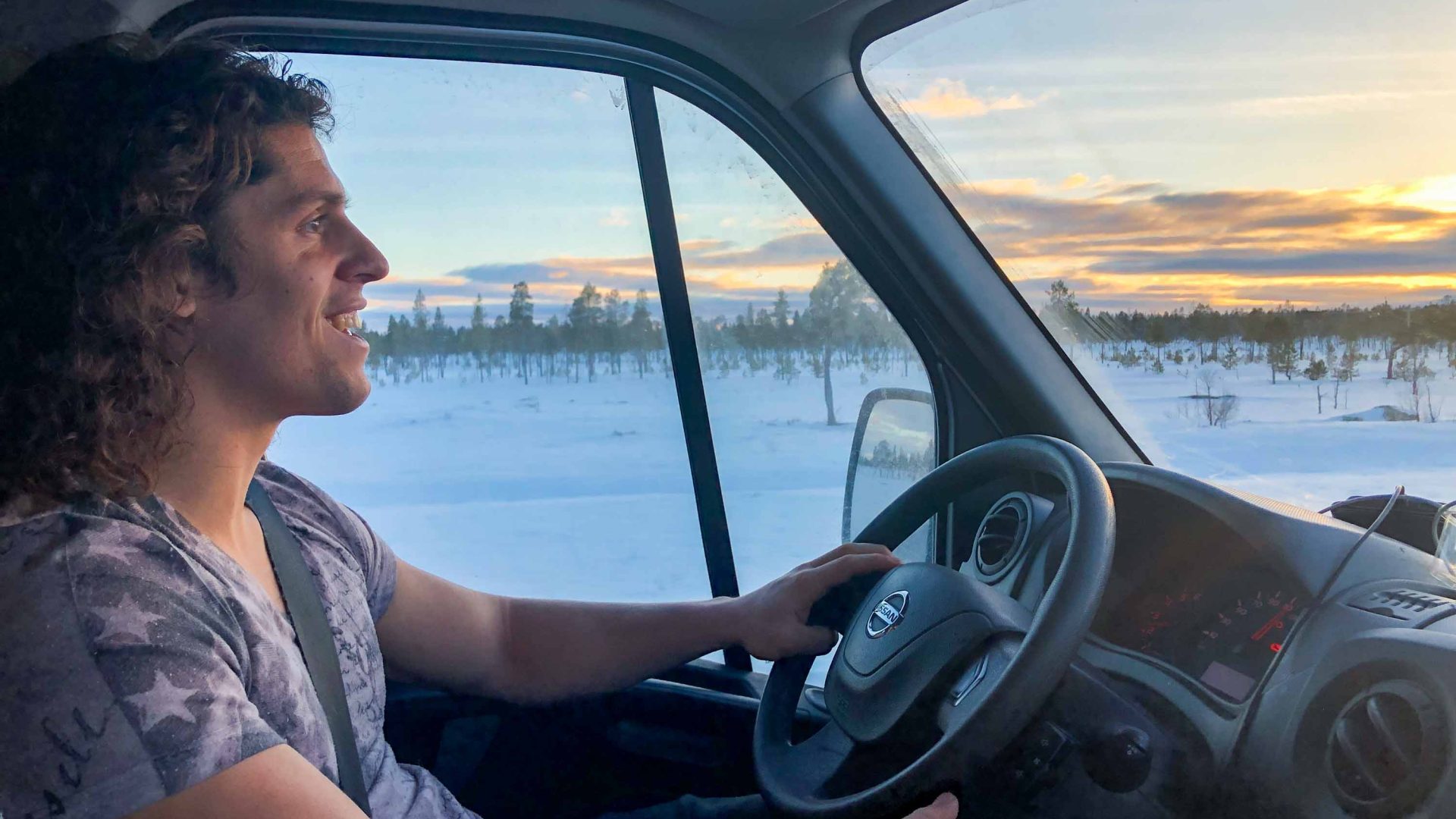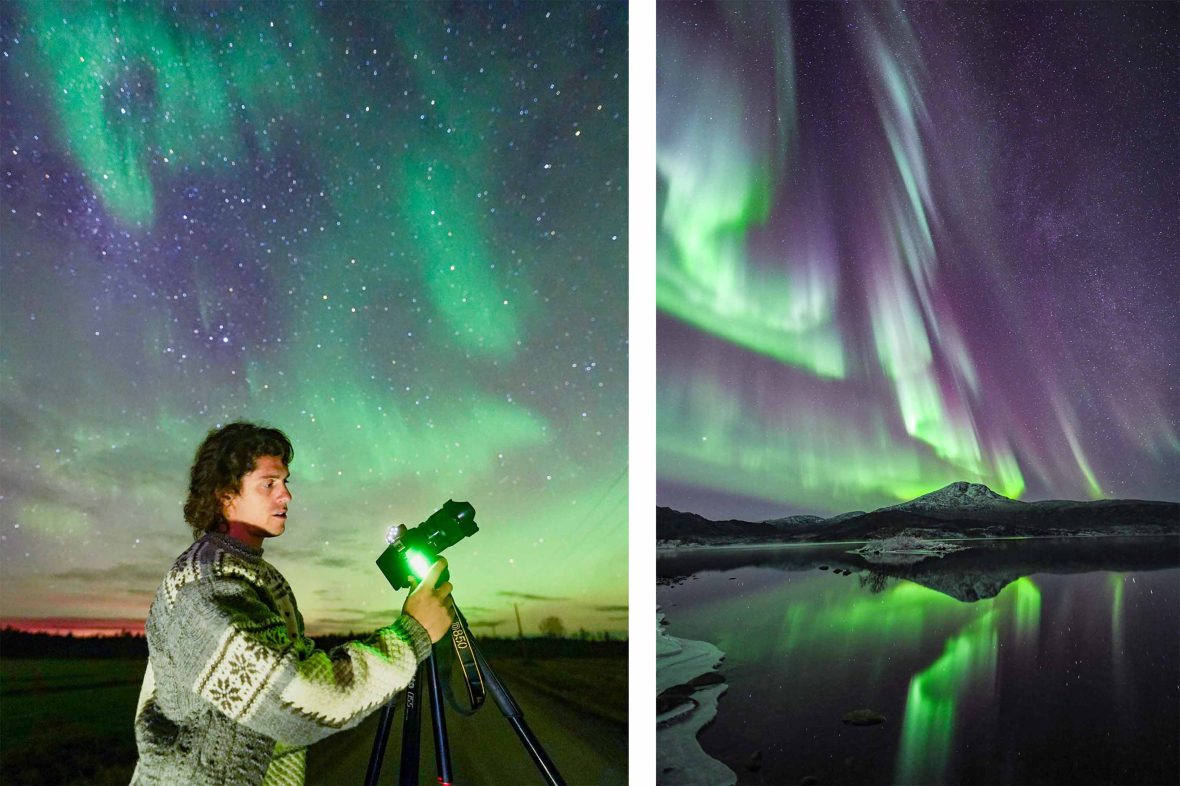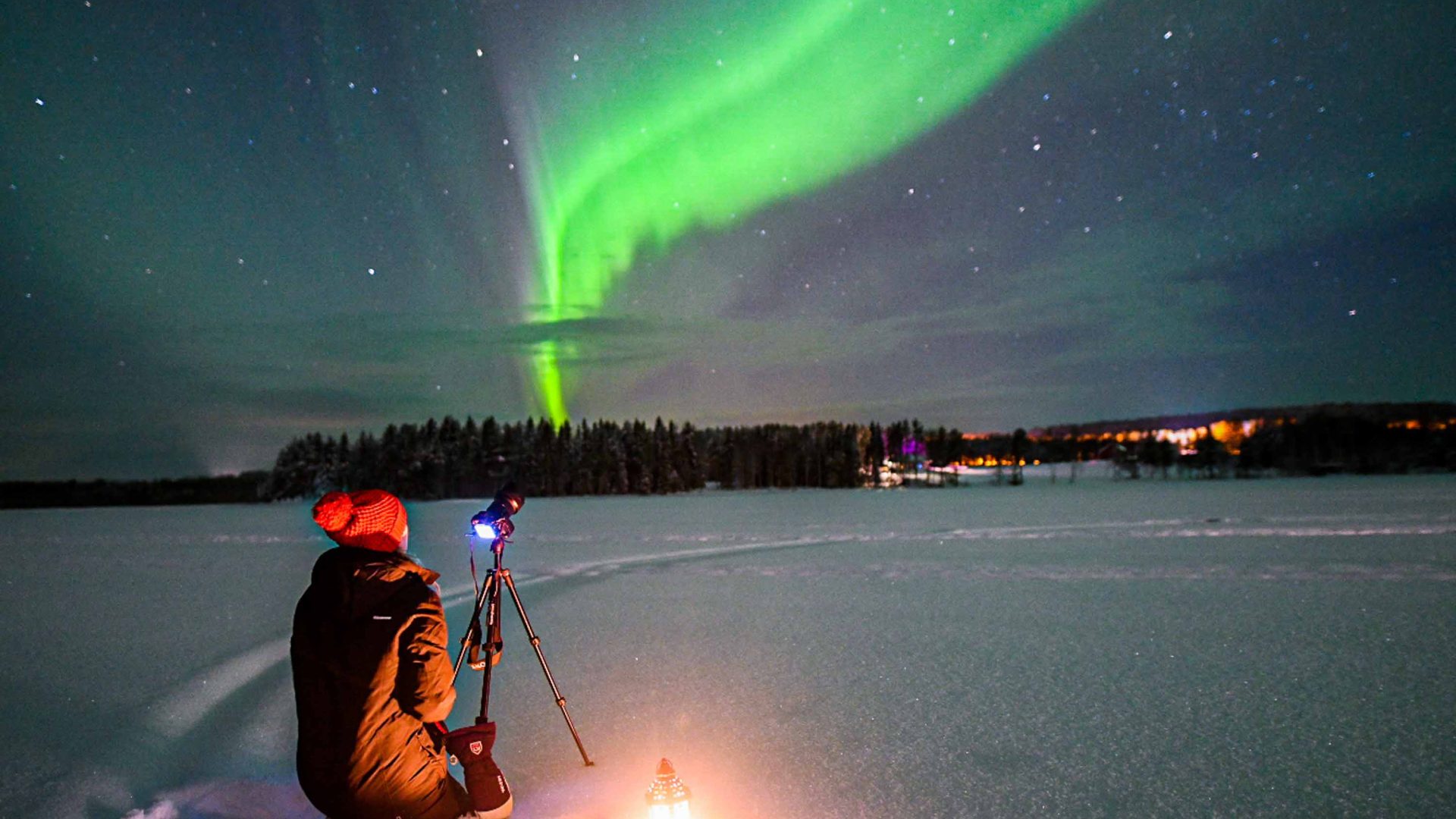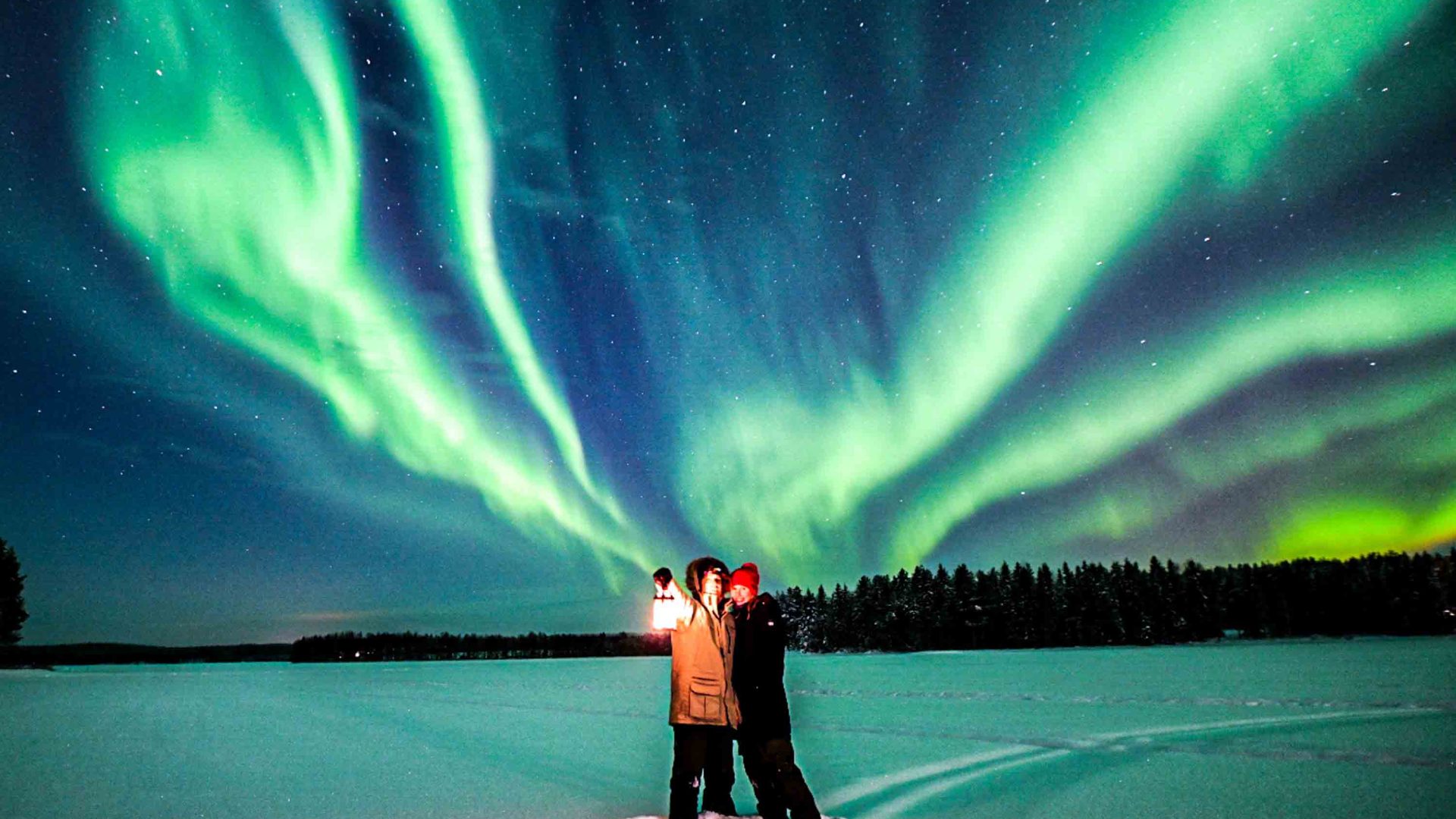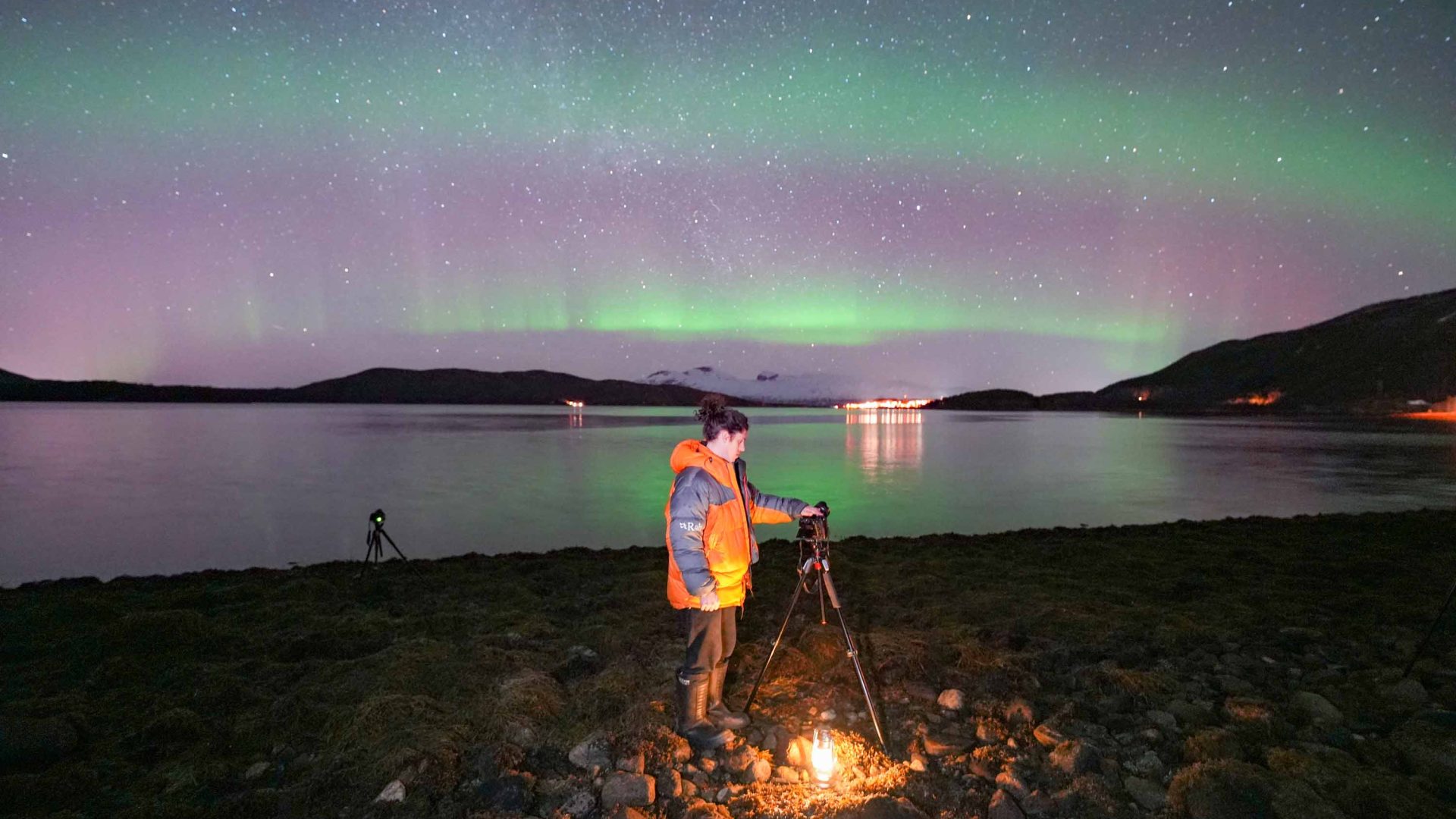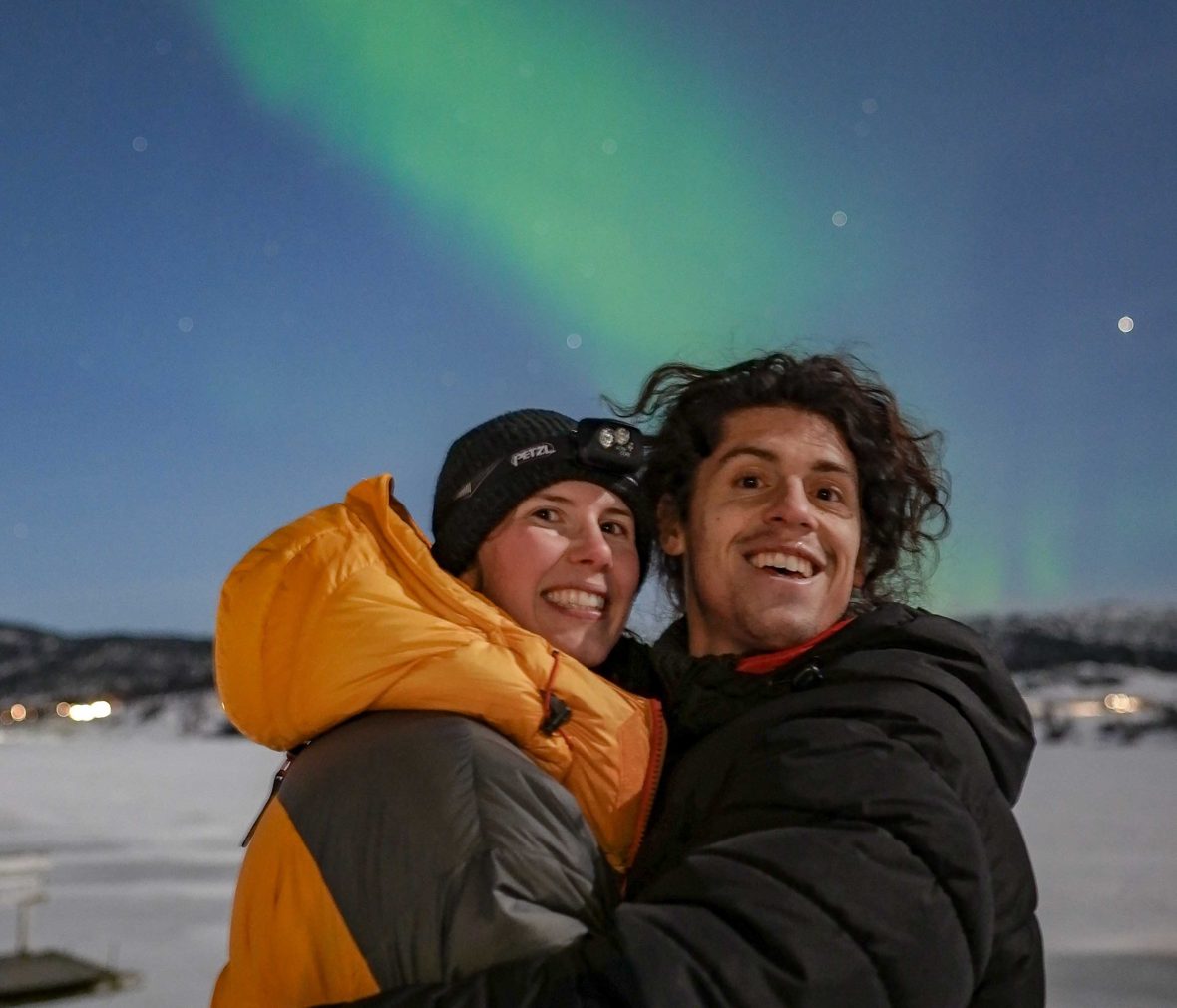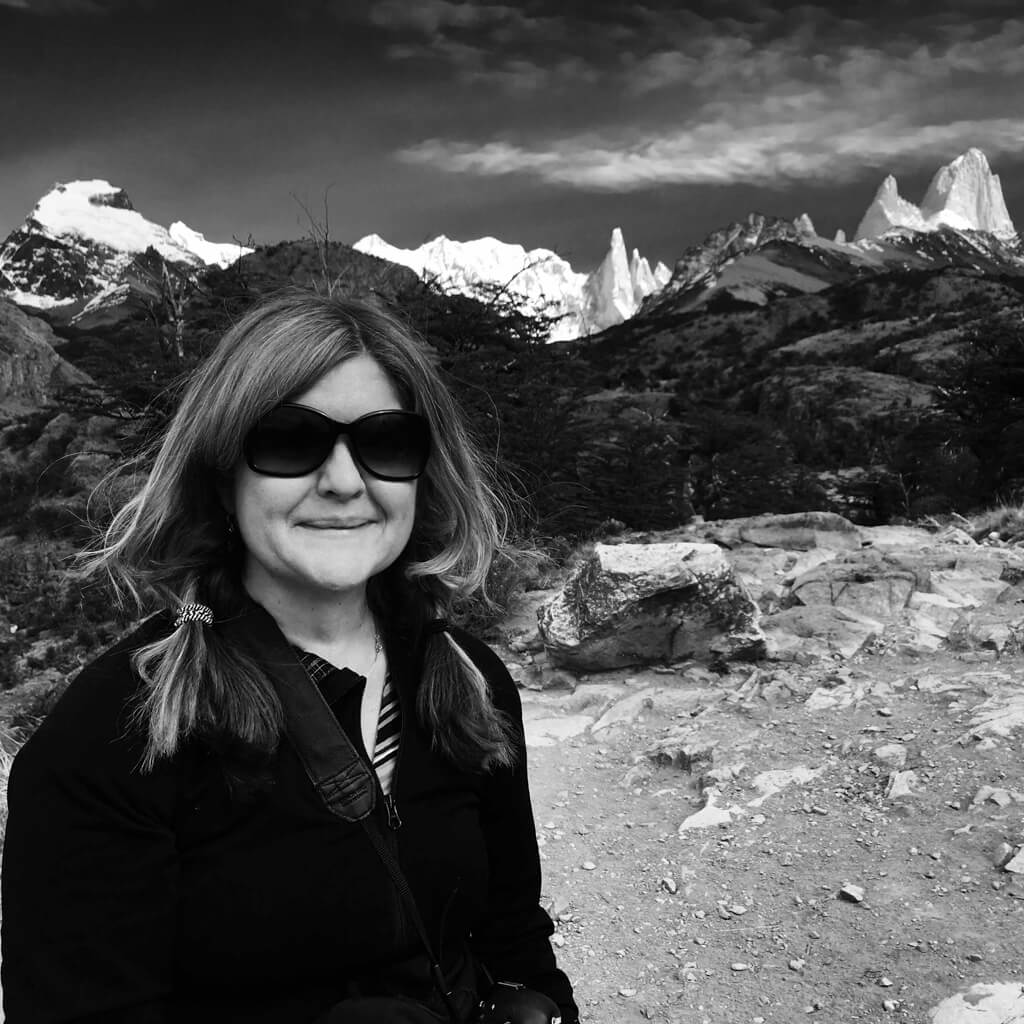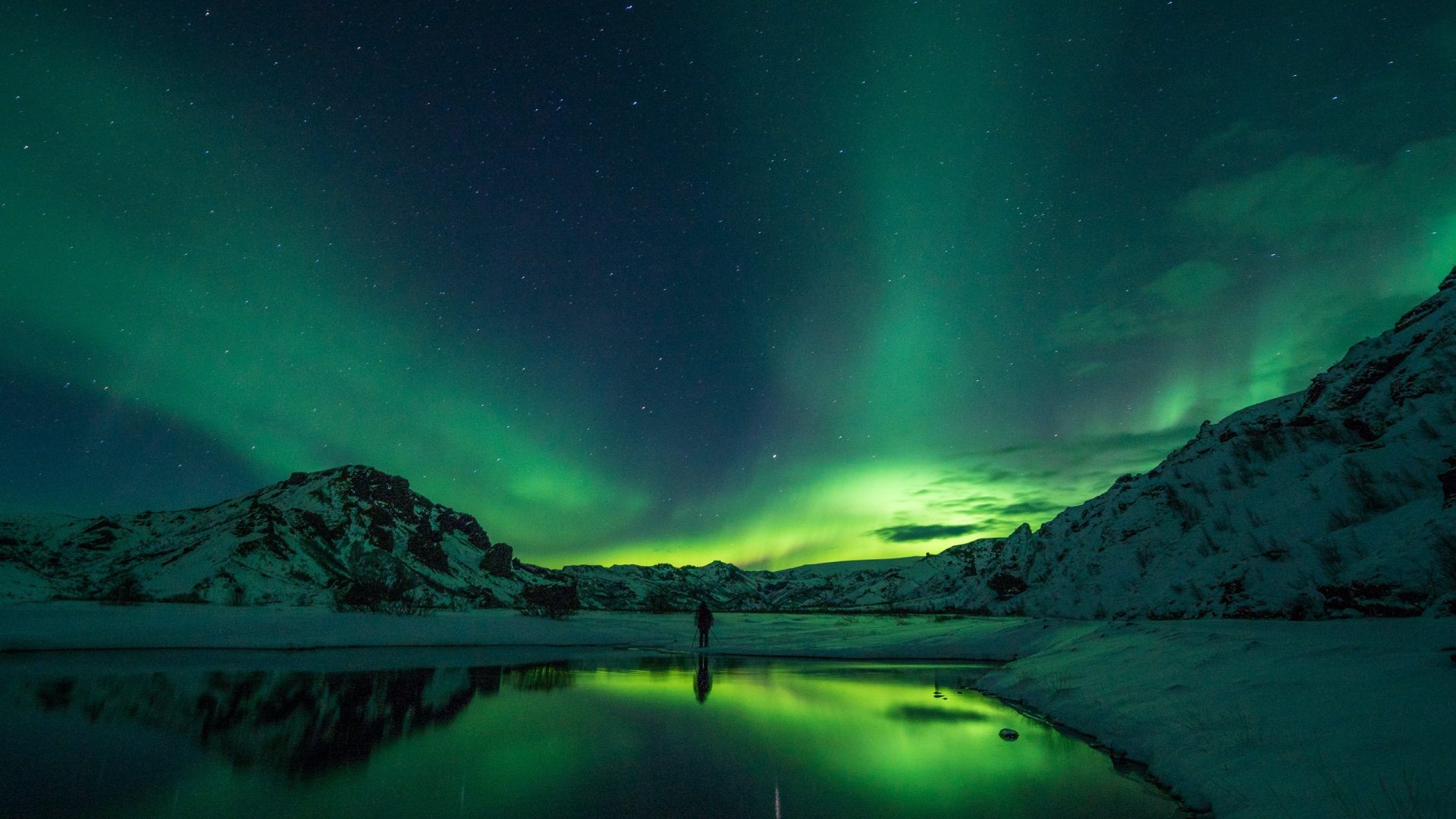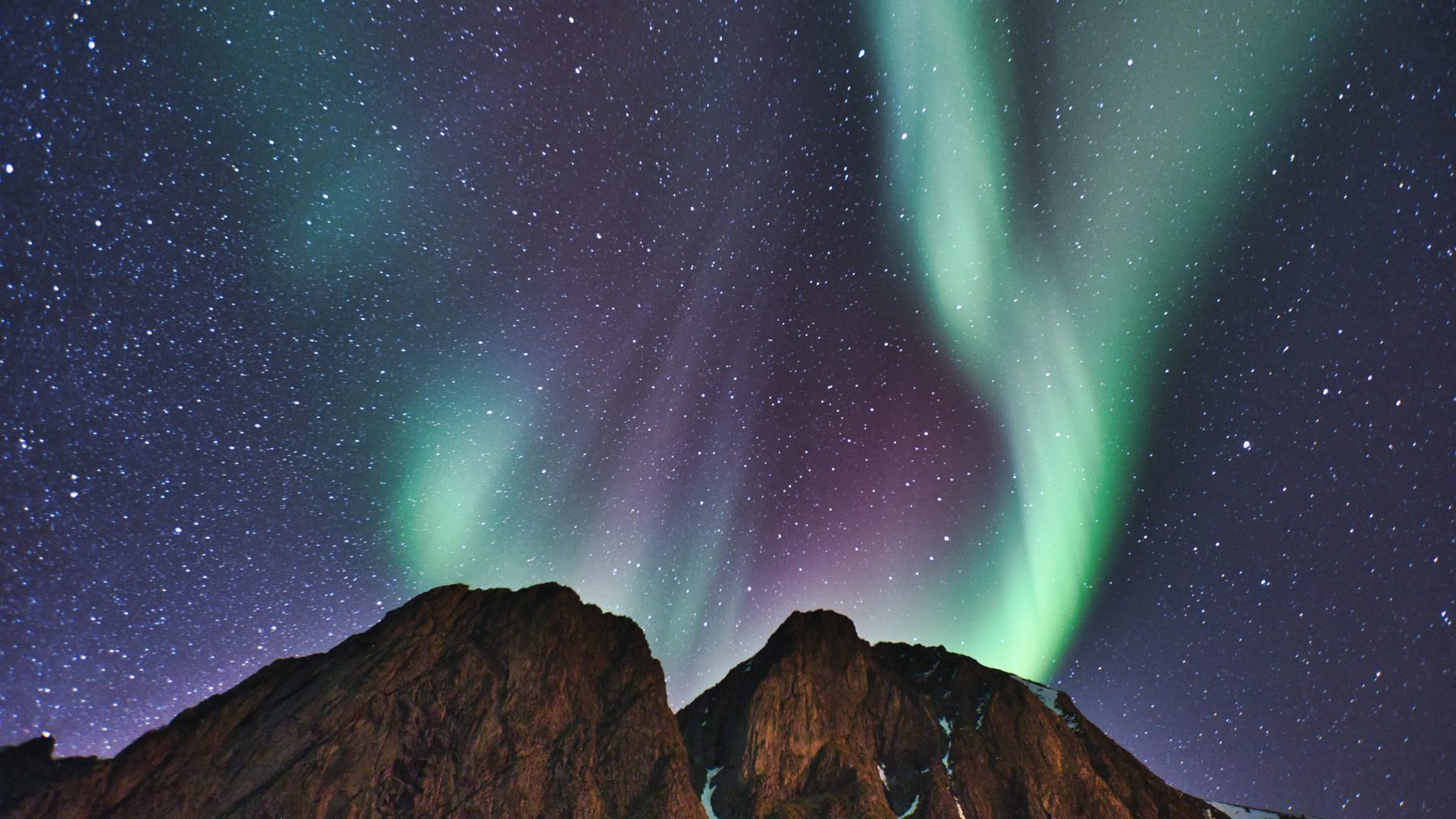It was about 10pm when Lorenzo Mirandola parked the tour van in front of a frozen lake on the outskirts of Saltstraumen, Norway. He dashed outside without his coat and aimed his iPhone at the sky, capturing a faint trail of blue-green light.
“It’s starting,” said Mirandola, his grin framed by a halo of dark curly hair.
By “it,” he meant the northern lights, or aurora borealis—a ribbony, multi-colored light display powered by solar energy. In Finland, people call it the revontulet or ‘fire fox’, based on an old belief that the lights are caused by a magical fox traipsing through the sky. The Northern Sami name for the northern lights is guovssahasat, which means morning or evening glow.
The Italian and French tourists and I hustled out of the van, slipping into coats, hats, boots, and gloves. We crunched down a slope of snow and ice to stand on the frozen lake. Then we looked up. With the naked eye, the start of the aurora looked like a hazy cloud. But as it grew stronger, it turned into an explosion of green and even pink light that pulsed and danced and swirled against a spattering of stars.
Mirandola had set up several cameras on tripods to capture the display, and he leapt between them, making adjustments and snapping shots.
“Wow… Wow!” he cried with boyish excitement, almost as if he were seeing it for the first time. But of course, he’d seen it many, many times before.



